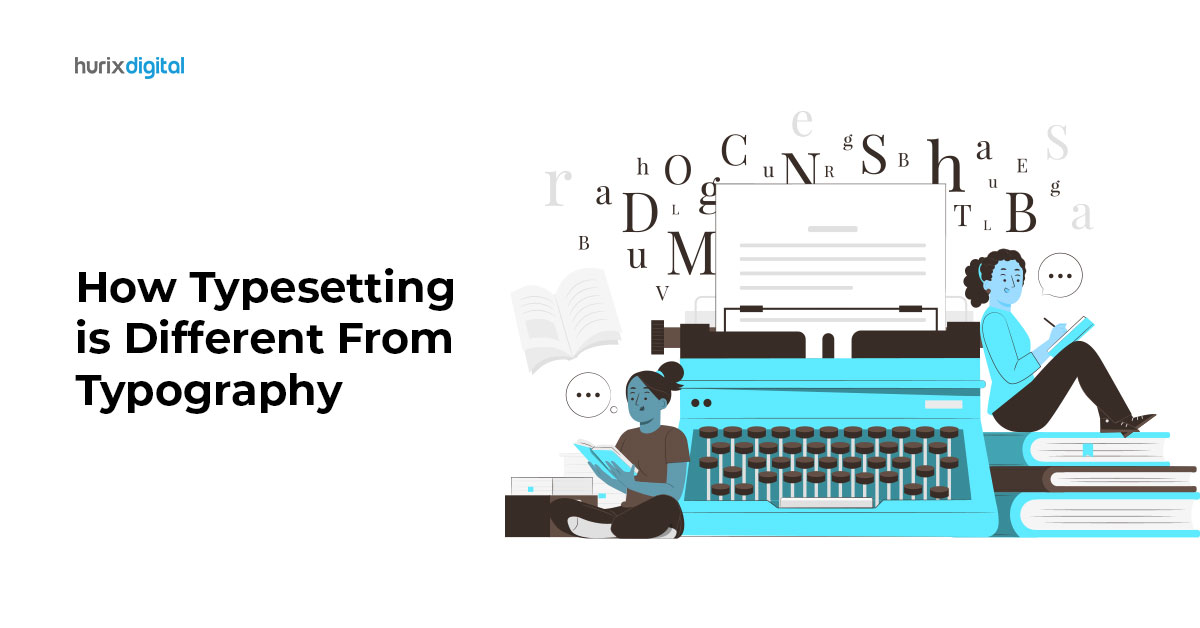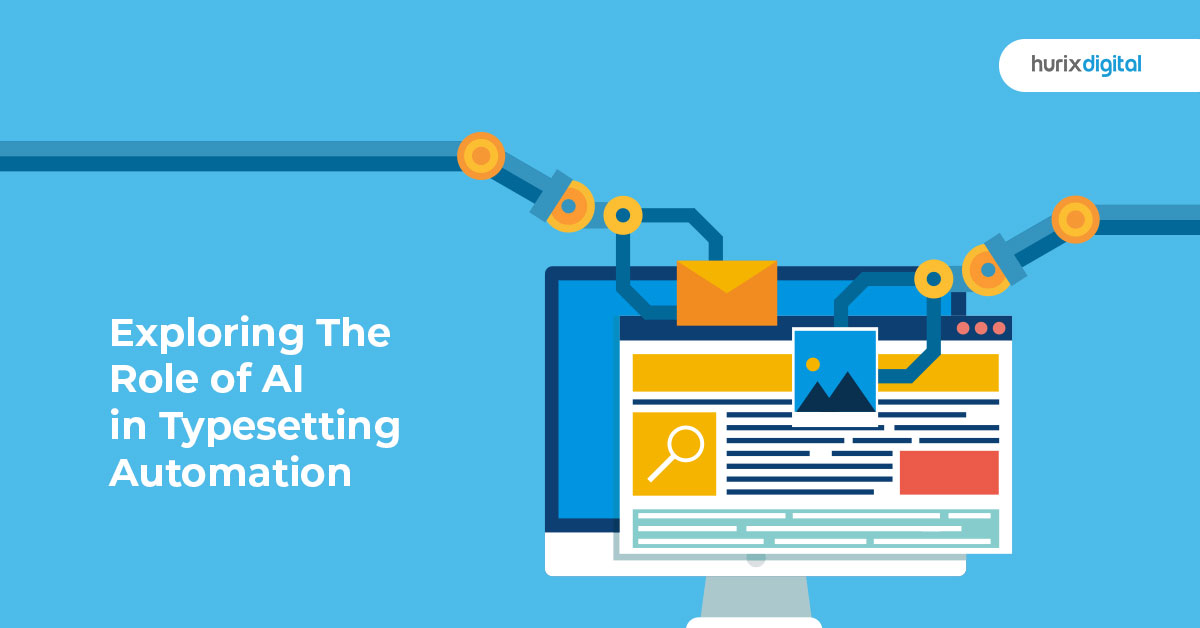
How Typesetting is Different From Typography
Summary
This article explains the differences between typesetting and typography, focusing on their respective roles in the design and production of textual content.
Today, the publishing business has undergone several shifts. Digital transformation across the globe has driven more consumers to prioritize digital products over paper books.
With exposure to aesthetically pleasing and user-friendly interfaces across social media platforms and other apps, consumers have also come to have high expectations in terms of layouts and user journeys of digital content products.
As of April 2023, the world has 5.18 billion internet users, which amounts to 64.6% of the world population. Of them, 4.8 billion, i.e., 59.9%, were social media users.
Revenues for eBooks are also expected to rise from $14.16 billion in 2023 to $15.33 billion by 2027. To key pace with these developments and stay profitable, businesses need to upgrade core processes such as typesetting and optimize their operations.
In this blog, let’s understand the key difference between typesetting and typography and how automation will play a key role in transforming the world of publishing.
Table of Contents:
- Typesetting and Typography – The Key Difference
- What are Typography and Typesetting In Publishing?
- How Automation Impacts Typesetting/Typography
- What are the Key Benefits of Automated Tools?
- Snapshot of LaTex Software
- Conclusion
Typesetting And Typography – Key Differences
Typesetting and typography are both processes associated with publishing, but they are often used interchangeably due to a lack of understanding. However, both processes play a distinct role.
Typesetting is the process of formatting all the content – from text and images to tables to enhance the readability, legibility, and aesthetic appeal of a content product. It plays an important role in publishing paper books, eBooks, textbooks, eTextbooks, scientific journals, white papers, slide shows, and other digital products.
Typography, on the other hand, focuses more on making the text visually appealing to consumers. It is considered to be both an art and a technique, which involves choosing the typeface, i.e., the design of letters, symbols, and numbers, and their placement across the content product.
The importance of typography increases, especially when the text needs more emphasis because it needs to have a bigger impact. For instance, say in advertising.
What are Typography and Typesetting in Publishing?
Typography and typesetting are two extremely important processes in the publishing industry. Typesetting is a widely used foundation process in the publishing industry.
Traditionally, it has been used to format the layouts of book content for printing purposes. Hence, book typesetting is a staple of any business engaged in the business of printing books – textbooks, fiction, non-fiction, and even journals.
Typography, on the other hand, is part of the typesetting process in publishing. It comprises the arrangement of fonts, numbers, and other characters to become readable and aesthetically pleasing.
Being a manual process, it took a significant amount of time to complete the typesetting work cycle, especially since it involved the engagement of multiple stakeholders. These include editors, authors, and designers, for instance.
However, with publishing businesses shifting to digital, automated typesetting tools are helping expedite production cycles and raise the quality bar for the final products. For instance, typesetting automation tools such as LaTeX are changing businesses’ operations.
How Automation Impacts Typesetting/ Typography
Automated typesetting software is a cloud-based Interface powered by Artificial Intelligence (AI), Machine Learning (ML), and automation. This tool automates several repetitive activities which are involved in the typesetting process. However, the value of such tools goes much beyond this.
Automated typesetting companies are bringing out software with several features that enhance collaboration, boost quality, and enable creators to raise the standard of the final output. It also enables the automation of the typography function by recommending various styles and doing layouts.
The demand for such tools is expected to rise due to the adoption of digital solutions. For instance, the K-12 Education Market is projected to grow to $6.079 billion by 2028.
This is only possible by making the shift to eTextbooks, which requires the use of cutting-edge automated typesetting tools.
Also Read: How Automation is Revolutionizing the Typesetting Industry
What are the Key Benefits of Automated Tools?
Automated typesetting tools bring several advantages to the table as follows:
- They help reduce the labor-intensive efforts traditionally required to build a product from scratch. For instance, the software intuitively recommends templates that are relevant to all sections of the content.
- They enable automated processes to produce fonts or font designs, thus enabling time-efficient and superior-quality typography.
- Typesetting professionals can focus on bringing more customization to the product and enabling it to stand out from the clutter.
- Cloud-based automated typesetting tools reduce the back-and-forth of proofs that are typically exchanged between editors, authors, and designers. All can work on the same proof simultaneously, sans any version chaos.
- As businesses expedite the typesetting cycle, they can go to market faster with new products and respond to new market needs with speed.
- They can function with lean teams, streamline operations, and scale their publishing efforts, thus driving up revenues and profitability.
Snapshot of LaTex Software
With automated typesetting gaining popularity, publishers want to work with Artificial Intelligence (AI) driven book typesetting tools that help bring more efficiency and quality to their products.
This is where software such as LaTeX typesetting tools enable publishing teams to bring more customization to the typesetting cycle.
For instance, this software comes with pre-existing templates for all types of content formats – from sections, listing of referencing, figures, and tables to citations, formulae, and cross-referencing. Without access to such templates, designers have to build the entire format from scratch.
Such access brings speed to decision-making, and designers can focus on raising the overall appeal of the content formatting. Automatic version saving ensures that no data is lost at any production stage and that all changes are trackable.
LaTeX does enable various font styles from four families Computer Modern, Latin Modern, PostScript Fonts, and TeX Gyre. Also, key iterations such as bold, italics, and underlining.
This software is also compatible with a wide range of devices, which makes it easy to access when multiple collaborators work remotely from diverse locations and computer systems. The cloud-based software enables them to work on a single manuscript simultaneously and seamlessly.
Also Read: Exploring The Future of AI in Typesetting Services
Conclusion
Today, automated tools are helping publishers and other businesses streamline processes like typesetting and typography and bring out high-quality content products. The processes are expedited, giving businesses more control over costs and timelines.
However, businesses can also completely outsource their operations and avail of professional tech-powered typesetting services. The best service providers offer auto styling with AI tools, professional proof PDF development, and author proofing seamlessly and efficiently.
If your company is looking to transform its typesetting processes, Hurix Digital is geared to support you in meeting all your publishing needs. Our state-of-the-art AI digital publishing platform is available as a licensed version (one-time buy) and via a subscription model. We also offer in-house pre-press, and AI-assisted typesetting solutions, to meet your publishing needs.
Get in touch with us to start a conversation.

Vice President – Digital Content Transformation. He is PMP, CSM, and CPACC certified and has 20+ years of experience in Project Management, Delivery Management, and managing the Offshore Development Centre (ODC).







